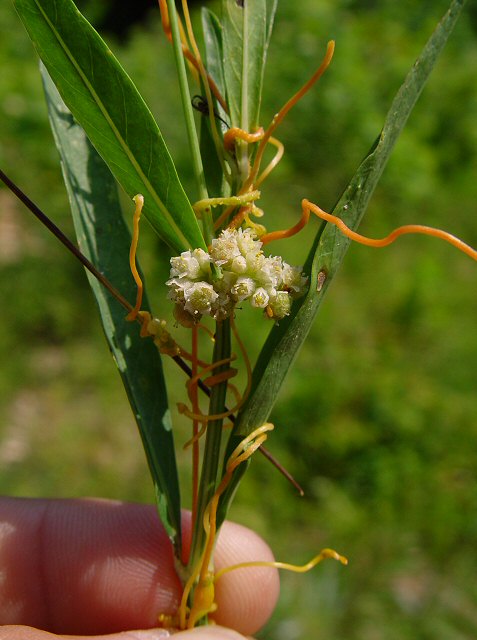Cuscuta L.
Dodder

Native
CC = n/a
CW =
MOC = 0
© DETenaglia
Cuscuta L.Dodder | |
 |
Native CC = n/a CW = MOC = 0 |
© DETenaglia |
|
Family - Convolvulaceae Stems - Typically greenish-yellow to orange, thin, herbaceous, twining, glabrous, typically achlorophyllous or with sparse chlorophyll, attaching to host with haustoria. Leaves - Absent or scalelike and alternate. Inflorescence - Typically loose to compact cymose globular clusters (but very dense in a couple of species). Flowers sessile or on pedicillate. Flowers - Typically 4 to 5-merous, to 5mm long, creamy white. Corolla lobes acute to obtuse or rounded, spreading to reflexed or erect. Stamens typically with scalelike appendages. Appendages often fimbriate. Styles typically 2, sometimes single or united. Ovary globose, 2-locular. Fruit typically a globose circumsissle capsule with 2 seeds per locule.
Flowering - June - October. Habitat - Many found in low wet areas and pond margins, others found in prairies, glades, thickets, and cultivated ground. Origin - Native to U.S. Other info. - Although these plants are common, identifying each species can be a lesson in frustration. A good lens or microscope is needed to view the floral parts in detail. Each species is also typically consistently parasitic on a few host species. This fact can also help with an ID. Consult Steyermark if you want to try an individual ID for yourself. Good luck. Photographs taken at Pultite Spring, Shannon County, MO., 6-27-04. |